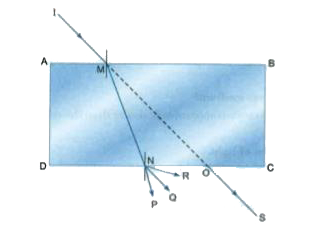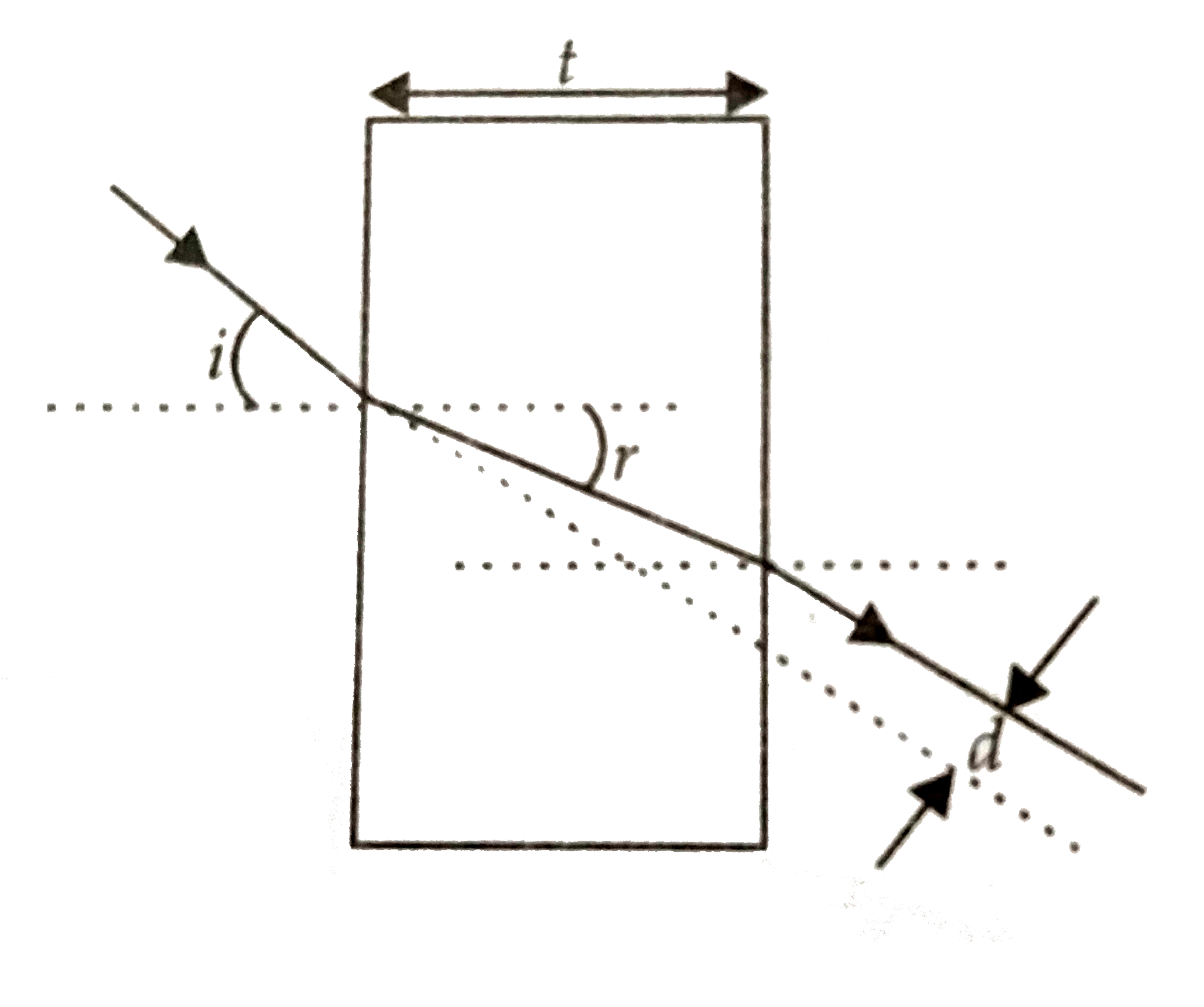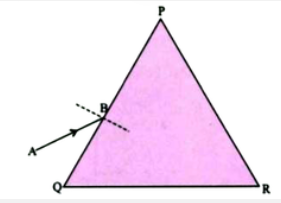If a light ray IM is incident on the surface AB as shown, identify the correct emergent ray.

Here, NQ is parallel to OS. Therefore, NQ is the correct emergent ray.
Topper's Solved these Questions
- BOOK - VK GLOBAL PUBLICATIONCHAPTER - LIGHT-REFLECTION AND REFRACTIONEXERCISE - SHORT ANSEWR QUESTIONS-I16videos
LIGHT-REFLECTION AND REFRACTION
- BOOK - VK GLOBAL PUBLICATIONCHAPTER - LIGHT-REFLECTION AND REFRACTIONEXERCISE - SHORT ANSEWR QUESTIONS-II12videos
LIGHT-REFLECTION AND REFRACTION
- BOOK - VK GLOBAL PUBLICATIONCHAPTER - LIGHT-REFLECTION AND REFRACTIONEXERCISE - NCERT Exercises17videos
LIGHT-REFLECTION AND REFRACTION
- BOOK - VK GLOBAL PUBLICATIONCHAPTER - ELECTRICITYEXERCISE - SOME IMPORTANT NUMERICALS12videos
ELECTRICITY
- BOOK - VK GLOBAL PUBLICATIONCHAPTER - MAGNETIC EFFECTS OF ELECTRIC CURRENTEXERCISE - HOTS (Higher Order Thinking Skills)22videos
MAGNETIC EFFECTS OF ELECTRIC CURRENT
Similar Questions
Knowledge Check
- Question 1 - Select One
A rays of light is incident on a thick slab of glass of thickness t as shown in figure. The emergent ray is parallel to the incident ray but displaced sideways by a distance d. If the angles are small then d is
 At(1+ir)Brt(1−ir)Cit(1−ri)Dt(1+ri)
At(1+ir)Brt(1−ir)Cit(1−ri)Dt(1+ri) - Question 2 - Select One
A rays of light is incident on a thick slab of glass of thickness t as shown in figure. The emergent ray is parallel to the incident ray but displaced sideways by a distance d. If the angles are small then d is
 At(1+ir)Brt(1−ir)Cit(1−ri)Dt(1+ri)
At(1+ir)Brt(1−ir)Cit(1−ri)Dt(1+ri) - Question 3 - Select One or More
When rays of light are incident on a glass slab, then the incident ray and emergent ray are ……….. To each other.
AperpendicularBparallelCoppositeDconcurrent
Complete the path of the monochromatic light ray AB incident on the surface PQ of the equilateral glass prism PQR till it emerges out of the prism due to refraction.
 View Solution
View SolutionAn isosceles prism has one of the refracting surfaces silvered. A ray of light is incident normally on the refracting face AB. After two reflections, the ray emerges from the base of the prism perpendicular to it. Find the angle of the prism.
View SolutionAn isosceles prism has one of the refracting surfaces silvered. A ray of light is incident normally on the refracting face AB. After two reflections, the ray emerges from the base of the prism perpendicular to it. Find the angle of the prism.
View SolutionA ray of light is incident at 60∘ on one face of a prism of angle 30∘ and the emergent ray makes 30∘ with the incident ray. The refractive index of the prism is
View SolutionA ray of light is incident at 60∘ on one face of a prism of angle 30∘ and the emergent ray makes 30∘ with the incident ray. The refractive index of the prism is
View Solution

